|
Meet Satya. He was born just a few weeks ago, in our dining room!
He's my third child, and his birth was something else.
With my first two babes, I woke up at my usual time in the morning and felt an inexplicable new feeling in my body. A couple hours later both times, my contractions began, and both times by 8pm there was a new kid in our house! I'd been reminded throughout this pregnancy by my midwives and friends that third babies can come really fast. "Make sure you call us right away" they said. "Have a backup in case we can't get the tub filled in time," they said. So while consciously I knew that every birth is different, the truth is I fully expected this labor to be straightforward and speedy like my others (or even-- I hoped-- faster!) Which is why when I began having mild contractions on Saturday, I scrapped our weekend plans. But... by Sunday morning they hadn't gotten any stronger, longer or closer together (that's how you know it's really happening.) I let the midwives know what I was feeling, made some raspberry leaf tea, ate my 6 daily dates and settled in to wait.
I'll skip the details of my next 2 days and just tell you there's a thing called prodromal labor. It's like... the purgatory of birthing. It's like the myth of Sisiphus, where he keeps pushing that boulder up the hill and it always rolls back down.
Prodromal contractions can be uncomfortable enough that you can't concentrate on doing other things while they're happening, but unlike "real" labor, they can continue without progressing in intensity or frequency for days or even (gulp) weeks. Except that sometimes they stop completely and then start again. Oof. Despite it not being my first rodeo, I was unprepared for this. Or was I?
The thing is, I'd been sweating it up in our in-home hot room at least 5 days a week throughout this pregnancy. (Not to mention the other 17 years-ish since I found Bikram Yoga!)
So I actually had everything I needed. Here are just some of the skills I've honed through my yoga practice, which helped me cope with feelings of frustration, impatience and exhaustion during the 60 hours or so from my first contraction until I finally met my son: Breathing Just like in yoga class, I use nose breathing during labor to keep my nervous system calm and conserve energy. Here's more about how that works. Interoception Interoceptive awareness is the ability to identify, understand, and respond appropriately to the body's internal cues. It's knowing what is going on inside my body, what it means, and what to do about it. Pregnancy Yoga emphasizes this skill, encouraging us to constantly monitor the sensations in the body brought on by each posture, and adjust the intensity as needed. I mean, you should really be doing this in any yoga class! You just might get more reminders from the teacher during Pregnancy Yoga. Practicing with an injury will also train this especially well: you constantly have to listen to your body's messages to know if you need to do less or rest. Interoception helped me pace myself even during a labor that seemed to go on and on. I could feel what my body was doing and respond to its needs in each moment with movement, sounds or rest.
Faith
I had to tap into my faith a lot during my weekend of waiting for Satya. Faith in the natural process of birth, faith in my body, faith in myself. With labor starting and stopping I began to doubt myself: maybe it was wishful thinking? Did I will myself into having contractions before it was really the time? What if I got too tired and couldn't see this through to the finish line? There was a moment just before I needed to push, where I said to my husband "I don't know if I can do this." As soon as I said it, I knew that I could. What we practice in Bikram Yoga class and in Pregnancy Yoga is repeatedly putting ourselves in this position. We're struggling, thinking "I don't know if I can do it" and then we prove to ourselves: we can. Hatha (physical) yoga is about using our bodies to cultivate a relationship of faith (trust) with ourselves. And it goes so far beyond the physical realm. Determination In yoga, you might associate determination with "pushing through" or holding the pose no matter what until the end. But in fact, determination in yoga can often mean, NOT pushing through. I mean, if your breathing is all over the place and your pose is misaligned because you're too tired to use your muscles correctly, pushing through or "no matter what" isn't determination: it's just ego! So determination can also mean the commitment to doing what is truly best for you, and not letting ego get in the way. During Satya's birth I used my determination in the "pushing through" sense. But I also had to stay determined to allow the process to unfold, without me (ego) trying to control it.
Concentration
By focusing your mind on what your body is doing in the present moment, even with potential distractions like the heat, sweat in your eye, or that housefly that somehow snuck into the room, yoga helps you hone your concentration powers until they become superpowers! Labor can actually slow or even stop as a result of distractions, like someone new entering the room. I used my concentration superpower during Satya's birth to keep me on track... even as my other children woke up and started eating their breakfast cereal beside me while asking questions about where babies come from! Patience In hatha yoga patience is developed in many ways. One is simply the patience to hold your body in an uncomfortable position until you hear the word "change!" Another is patience over the longer term: accepting your current level of ability/ flexibility/ strength/ balance and allowing that to improve over time, on a timeline that may be slower than you'd prefer. This one was huge for me with this birth. I'd been ready to meet Satya for days, and there were moments it seemed like he would never show up! I tapped into my yoga-patience and reminded myself that he would arrive exactly when he was ready.
Denouement
The good news about prodromal contractions is that they help the body prepare for active labor and may even help dilate the cervix a bit. By the time my baby was finally ready to join us, I only had to push 5 times to get him out. Satya was born just after 8am that Tuesday morning, with one arm raised up next to his head like he was setting up for Standing Bow Pulling Pose! It's called a nuchal hand presentation. And maybe that was part of the delay, my body trying to nudge him into an easier position before he began his descent. Besides longer labors, other nuchal hand birth stories I've read often involve tearing, pain and long hours of pushing. I can't say for sure if my yoga practice is completely responsible for my smoother experience, but I can tell you that besides walking the kids to school and a bit of swimming, it's the only exercise I've done for over a year. Here's how my pregnancy went:
Here's how I felt after Satya's birth:
I was talking with my doula a few days later, and she said: "Every baby has something to teach you with their birth." I think Satya's lesson for me was that life is (still) full of surprises. Every birth is different, even for the same mom! I'm in no way claiming that if you practice this yoga our experiences will be the same.
What I do know though, and what any birth professional will tell you, is that having a healthy body and mind can only have positive effects on the kind of pregnancy and birth you have! There's so much in life that is beyond our control, but to a huge extent your health is up to you.
Pregnancy Yoga ticks all the boxes for a safe and effective exercise regimen that will help you prepare for the birth of your dreams: It's zero-impact, moderate to low intensity, emphasizes breathing, tones the pelvic floor, strengthens joints, prevents back pain, builds stamina, improves balance and relieves stress. I felt so good during and after yoga that I practiced almost every day throughout this pregnancy. But you don't have to hit your mat daily to enjoy the benefits! Even 2 to 3 sessions a week can have a huge impact. So if you're expecting (or plan to be) find out more about Pregnancy Yoga here. We've got several classes and downloadable resources for you in our library here. And feel free to email me if you have any questions! I love helping out new moms and moms-to-be. Always consult your medical provider before starting a new exercise routine.
0 Comments
Science says multi-tasking makes your efforts less effective.We're always telling you to stare at stuff in class, aren't we? Your knee in the mirror or your stomach or 4 feet on the floor in front of you.
A single point of focus is a tool you get to use not only for balancing, but also to quiet your "monkey mind" which likes to swing from thing to thing (mine sometimes even screeches or bites!) With our phones and cars (not to mention kids, if you have them!) so many of us are almost always multi-tasking. Bad news, because it turns out multi-tasking is really ineffective and may actually hurt your brain. The good news is, your yoga practice can help you hone the skill of focusing on Just. One. Thing. Studies show that the more you practice mindful concentration, the better you'll get! For example, the results of a pair of studies in "Frontiers in Human Neuroscience" suggest that "brief meditation impacts attention even in novice practitioners." Try in class: commit to tuning in to each present moment your main objective for one session. Notice how you feel afterwards. Then try it on a stressful day at work or when there's just a ton to do around the house: Pick one thing, focus on it. Focus one point, eyes open and breathing normal. We have a feeling you'll feel better! But let us know how it goes in the comments below! I have been practicing Bikram yoga for 1.5 years. My beautiful wife Sophia has been doing it for years, and seeing the difference it makes in her life made me want to try it.
I have gotten numerous benefits from Bikram, starting with the common, increased strength, stamina, pain relief and flexibility. More surprisingly, I have developed a better sense of listening, contemplation and patience. With all the physical improvements, I am most proud of conquering my mind. Everything in my life has improved since I started Bikram yoga. Love, sex, relationships, work, even my tolerance of society. My skateboarding and surfing are more focused and I can target my aggression in productive ways. My Bikram yoga practice has helped me to improve my agility and recovery time, which has left me feeling like I have a long, long time to keep doing all the activities I enjoy. I think Bikram yoga is the key to longevity in all areas! The thought I have in the room that keeps me going is: solace. I want to thank Kay for this great honor of asking me to share my story, my wife for enhancing my life and the East Coast for making me strong. Love, Strength and Peace. -Wes Don't miss attending our Posture Clinic with Josh on Saturday, October 13! Free for BYSJ members, $20 everyone else.
As Bikram yoga teachers, so many students tell us this one is their "nemesis!" And we get it. SHTK not only requires you to use a ton of physical strength and stamina to develop your own flexibility, it also calls upon 110% of your will power, integrity and mental fortitude to stick with it, try the right way and not give up. The good news is, by using those aspects of your body and of your character you are building them up, and they (like this posture) will only get better with practice. Health benefits include:
How to do: Standing Head to Knee can be best understood by dividing it into a progression of stages or steps. Keep in mind that while we identify 4 main "steps" in the posture, there are a bazillion mini-steps along the way, and any one of the steps may take you weeks, months or years to master. For example, between grabbing your foot and locking both knees, you may find your maximum expression of the posture somewhere in-between for quite some time. No worries: as long as you try the right way and you don't give up, that's the ultimate destination!
*You want me to lock my knee?? Yes. But let's make sure you understand what we mean by that. In Bikram yoga, to "lock the knee" means 3 things: Straight leg (full extension of the knee joint) + thigh muscles (including quads) contracted + body weight even on the foot. Check out our post on the subject for more! Eyes and abs!
Balancing on one foot is a big challenge for many beginners. Remember that your 2 best friends on your "balance team" are your abs and your eyes. So always keep your abdominal muscles pulled in firmly, and maintain your one point of focus on your standing knee throughout the posture. Breathe normally Breathing properly is key. If you’re working on Step 1, simply breath normally with an engaged core. If you are kicking out into Step 2, inhale slowly by the nose while you kick your leg forward. Take another deep inhale when your both knees are locked and exhale as you bend your elbows down for Step 3. Take another deep breath and slowly exhale again as you tuck your chin to your chest for Step 4. This focused breathing keeps you calm and maintains oxygen moving through your body to feed your muscles. It also assists with the stretching and rounding of your spine and ribs. Enjoy! Finally, the real secret to mastery of Standing Head to Knee is: attitude. Relish every step of the magical journey, because every step has something to offer your body, mind and soul. And more than anything, this posture demands that you activate and cultivate the connection between those! That's part of what makes it so tough, and that's also what makes it so... yoga. 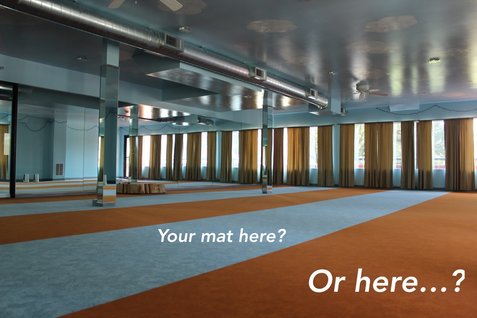 We hosted a truly excellent seminar last weekend with visiting senior Bikram yoga teacher Michael Harris. I've been working with Michael for about a year and a half now, and he is big on the idea that our job as yoga teachers is not just teaching asana (the physical postures) but that it's bigger than that- actually the most important thing we help our students learn is what a yoga practice is. How to have a yoga practice. Because if we can help you figure out what that means for you, it is something you can take anywhere and keep forever. It's not limited to your postures, but it definitely affects how you approach them and how you feel about them. After introductions, Michael began the conversation at the workshop with some tips on how to practice your yoga outside of and in-between your asanas: How and when do you drink water? How do you enter and exit the yoga room? Where do you set up your mat? Let's back up for a moment: Introducing ourselves to each other at the beginning of Michael's workshop, we shared what brought us to Bikram yoga. I shared that when I first started in 2005 (I was an overexercised, underfed, painfully perfectionist college dancer) I found I could not look at myself in the mirror in a loving way. Today I can and do. Over the years I have looked at myself through pain, injury, illness, depression, grief, birth and rebirth. It's one of the greatest gifts my practice has given me, and one of the things I enjoy most about taking class! Today I appreciate my body so much and love every little activity it does for me. As a mother and entrepreneur, yoga class is a luxurious opportunity to spend a quality 90 minutes moving and watching that body. It's hanging out with myself as my own friend, doing something we love together. Because of this I admit I am somewhat attached to my reflection in class. (Isn't it funny how much we change?) More often than not, I set up in the front row. Nearsightedness (and my refusal to wear glasses until absolutely unavoidable!) doesn't help. When I set up in the back I find myself squinting- though I know (teacher training in a room of 300+ people sure taught me) that I don't need to see the mirror in order to balance or to meditate. Years ago, a great teacher called me out for always practicing in the same spot. He told me I should practice in a different spot every day. I vaguely remember him actually making me move my mat if I was set up in my usual place, before he would start class... but that may have just been a bad dream! At that time I was attached to the mirror for very different reasons: it was more about forcing myself to stare down what I didn't like about myself. Many days this exhausted me so much by the end of Half Moon that I had to sit down. As Bikram says, I had nothing to lose, "because I never had anything to begin with." So I gave the moving-around thing a shot for the first time. I'm not sure what happened exactly, but little by little when I found myself in front of the mirror, I was no longer glaring at myself in contempt or frustration. I was beaming at myself with compassion. What are the habits, beliefs and feelings around where you put your mat? Do you have "your spot" and get to the studio early to claim it? Michael Harris invited us all last weekend to be curious about how and where we practice in the room. And that gave me an idea... This month I am participating with you in our first studio-wide 30 Day Challenge (some of you are already halfway through!!) Today, I invite you to join me in yet another challenge: the "Change Your Spot" challenge! Every day, I commit to practicing in a different spot. I admit I am not totally excited about the class when I have to be in the back corner by the door... But. The reason Bikram yoga works at improving strength or range of motion in the body is that we mindfully push the edges of our current capacity. That isn't only physical, and it isn't only for the asanas. Join me in the "Change Your Spot" challenge- or make up your own: maybe you will try not drinking water during class, not sitting down during class, always doing at least 1 set of every posture, taking a longer final savasana... pick whatever seems most uncomfortable to you! Now is the time to find out what mindfully pushing your edges can do for your yoga practice, and for the rest of your life... Worried about the impact of her mom’s long work hours and stressful job, Kathleen’s daughter, Megan- an avid Bikram yoga student for 10 years- was determined to get her into yoga. Kathleen thought it would be a fun thing to do together and wanted to address a 45-lb. weight gain as she approached her 57th birthday. She’d always loved to exercise and was happier when she did. Why not?
Kathleen says, “I bought a yearly membership in December, but I was so afraid of the heat, humidity, and all the crazy poses that I didn’t attend my first session until January 15th! I didn’t even tell my daughter I was going because I didn’t know how I would do. Having been an athlete most of my life (the hard hitting kind, NOT the flexible type) makes me very competitive and I feared that I would fail miserably and not ‘score well.’ Talk about a lot of “head factors!” “All my concerns surprisingly melted away in short order. All the teachers were/are so supportive and welcoming. It was very hard going at first and I was provided a lesson in humility. But I kept trying to do my best while focusing on making the smallest of improvements.” Kathleen read Bikram’s advice in his book to come each day for 30 days, or even better, for 60 days. He spoke about it so compellingly that she just had to give it a try. She couldn’t do weekends, but she committed to doing five days each week for two months. She’s now proud to say she did nine weeks straight of 5 classes a week! As Kathleen puts it, “Bikram is spot on! Those two months changed me and how I live. Work is no longer my primary focus and stress is a non-player for the first time in decades. I’ve slowly lost weight and improved my flexibility. (The first time I was able to grab my toes in Head to Knee pose I almost shouted out!) The heated room is now my sanctuary where I concentrate (meditation is still a bit of a mystery, but I’m open to it) on being the best me in the moment while surrounded by those of like mind and effort.” Kathleen’s advice to new students? “Take it a ‘show up’ at a time and begin the journey. Do not beat yourself up in the trying! Find that support person who can share the joys and challenges that each session brings. Embrace the heat and breathe through it. And don’t worry about those sleek types next to you who can become a pretzel without the mustard. Remember, everyone is in there trying to get to a new place too!” A recent conversation with my husband, uploading stories onto our Testimonials page, teaching several classes this weekend full of super-motivated students, and watching my 1-month-old daughter's efforts on her movement mat have all got me thinking about: perseverance, drive, dedication. What great feats we are capable of when we pour in everything we have! Here's one of my favorite poems on the subject. 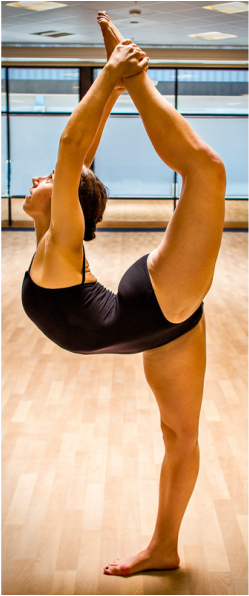 Success If you want a thing bad enough To go out and fight for it, Work day and night for it, Give up your time and your peace and your sleep for it, If only desire of it Makes you quite mad enough Never to tire of it, Makes you hold other things tawdry and cheap for it; If life seems all empty and useless without it And all that you scheme and you dream is about it, If gladly you'll sweat for it, Fret for it, Plan for it, Lose all your terror of God or of man for it, If you'll simply go after that thing that you want, With all your capacity, Strength and sagacity, Faith, hope and confidence, stern pertinacity, If neither cold poverty, famished and gaunt, Nor sickness and pain Of body or brain Can turn you away from the thing that you want, If dogged and grim you besiege and beset it, You'll get it! - Berton Braley Even if you've never taken a Bikram yoga class, you can probably imagine a few ways sweating your guts out for 90 minutes a day might change your body. (Weight loss, lower blood pressure, increased stamina, improved digestion, anyone?) After all, Bikram yoga is a hatha yoga practice, meaning a practice of physical postures, called asanas, and breathing techniques, called pranayama. And hatha yoga offers tremendous health benefits for all the systems of your body. But that's not all, folks! By attending to your physical practice, you also cultivate certain qualities of mind which have the power to absolutely transform the way you see the world and the way you live your life:
How has Bikram yoga changed your mind? Leave a comment. We love to hear from you! |
AuthorHHY Founder, Yoga Business Coach, yoga-doer and life-lover, Kay Afif! Categories
All
|

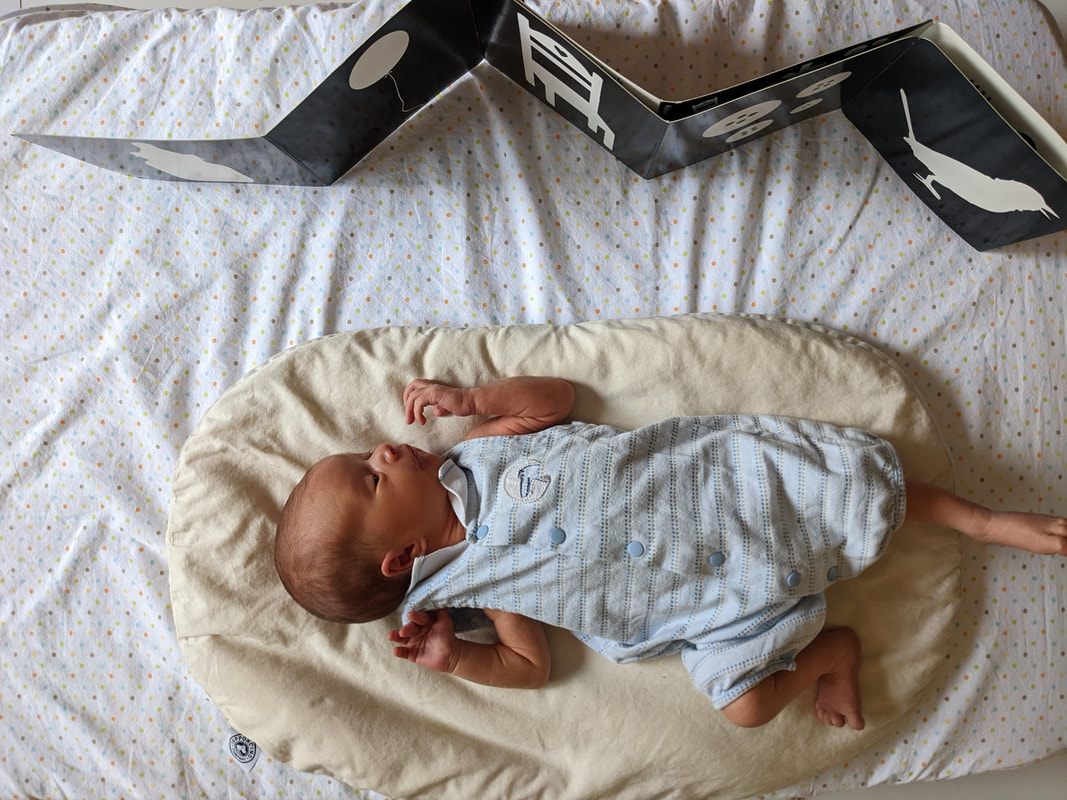
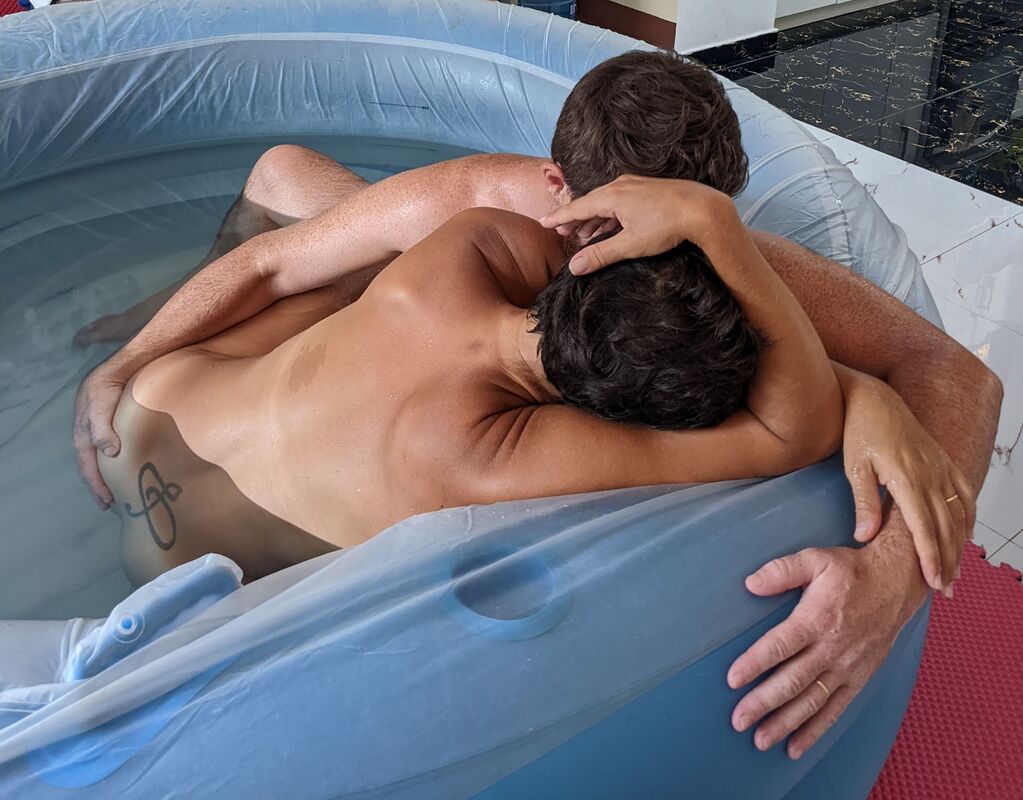
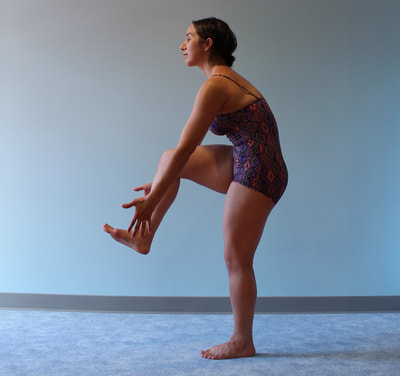
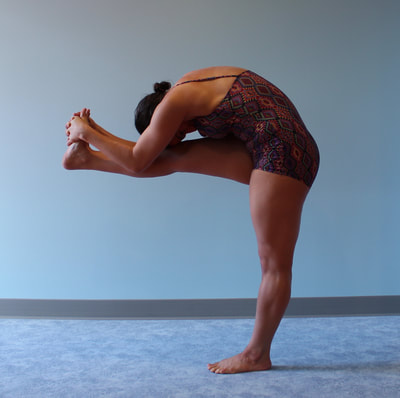
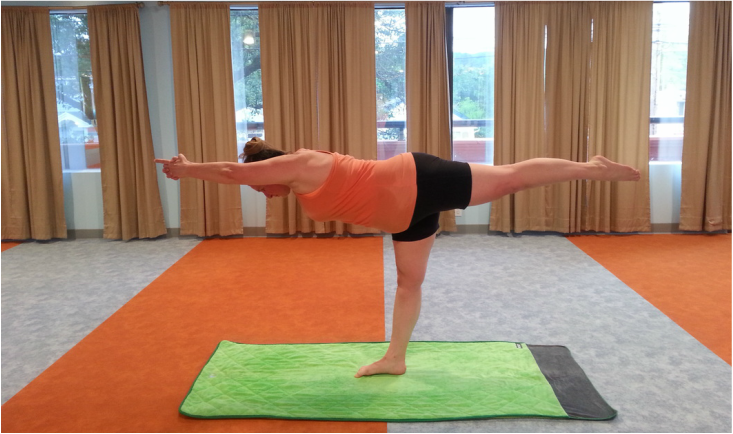
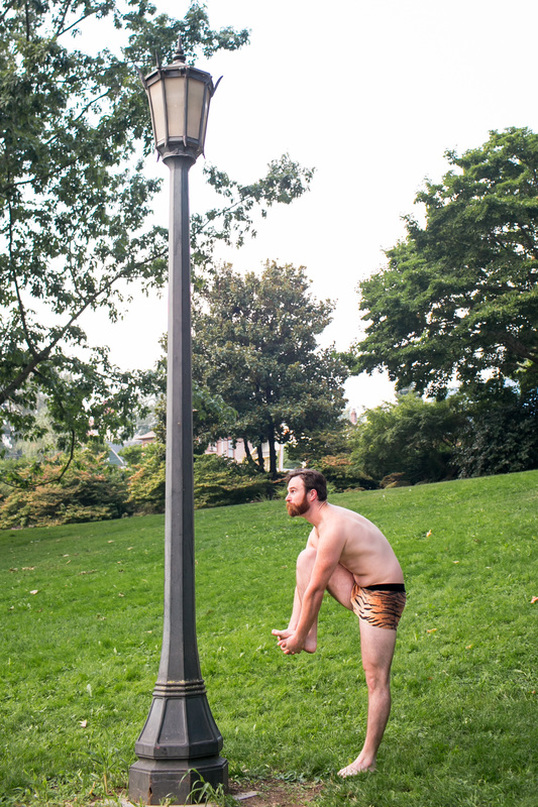
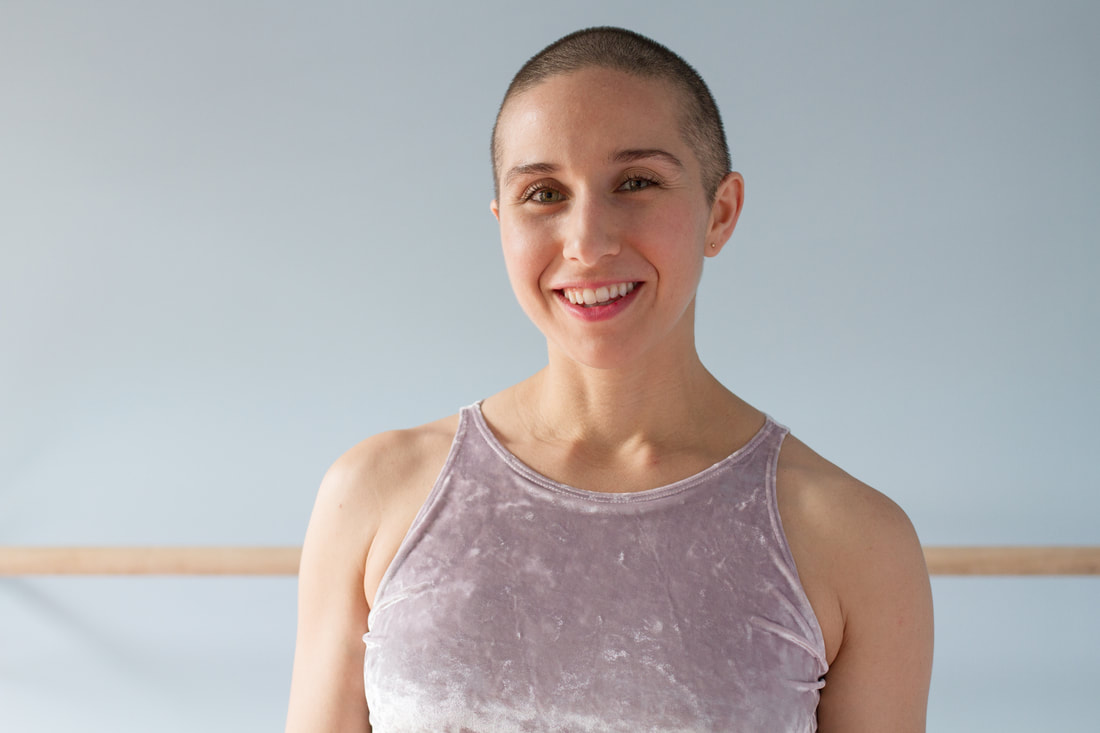
 RSS Feed
RSS Feed
